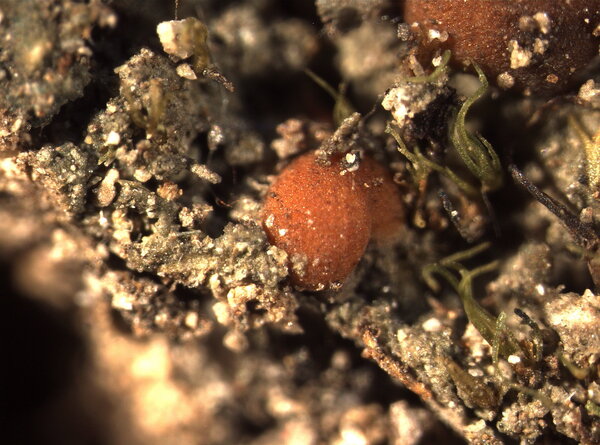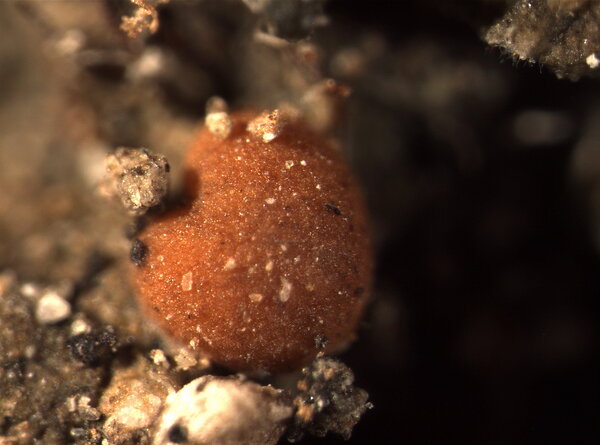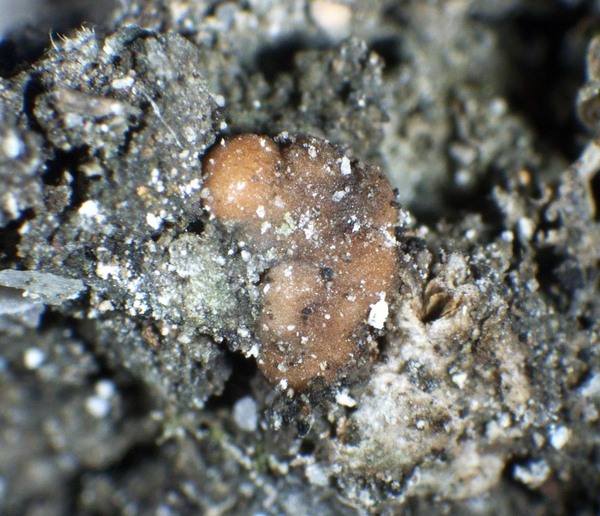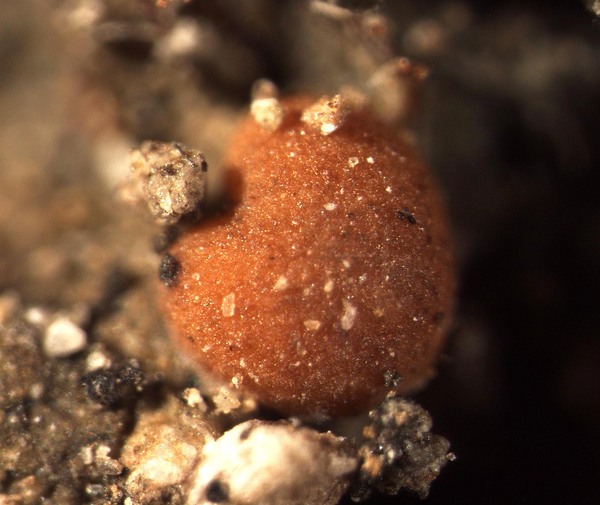Biatorella hemisphaerica Anzi
Cat. Lich. Sondr.: 78, 1860.
Synonyms: Biatorella fossarum f. hemisphaerica (Anzi) Vain.; Biatorella fossarum var. rubicunda Th. Fr.
Distribution: N - Frl, Ven (Nascimbene 2002, 2003b), TAA, Lomb, Lig. C - Tosc, Abr (Gheza & al. 2021).
Description: Thallus crustose, pale grey to greenish grey, thin and often inconspicuous, granulose to arachnoid. Apothecia biatorine, (0.8-)1-1.5(-2) mm across, orange-red to reddish brown, semi-immersed to adnate, not constricted at base, with a weakly to strongly convex disc, without an evident margin. Proper exciple very poorly developed, of more or less parallel hyphae, I+ blue; epithecium pale to orange-yellow, K-, often with a layer of crystals which appear as a dark yellowish-brown pruina; hymenium colourless or yellowish in upper part, 150-300 µm high, I+ blue; paraphyses richly branched and anastomosing, 1-1.5 µm thick in lower part, the apical cells distinctly swollen, 2.5-3.5 µm wide; hypothecium yellowish grey, sometimes inspersed with oil droplets, 150-400 µm high, composed of interwoven hyphae, I+ blue. Asci >100-spored, cylindrical to clavatewith a simple, K/I± faintly blue apical dome surrounded by weakly amyloid wall layers, Biatorella-type (see Hafellner & Casares-Porcel 1992). Ascospores 1-celled, hyaline, elongate-ellipsoid, 5-8 x 2-3.5 μm. Photobiont chlorococcoid. Spot tests: K-, C-, KC-, P-, UV-. Chemistry: without lichen substances.Note: on calciferous soil and amongst bryophytes, most often in rock fissures, mostly in upland areas; see also note on B. fossarum.
Growth form: Crustose
Substrata: soil, terricolous mosses, and plant debris
Photobiont: green algae other than Trentepohlia
Reproductive strategy: mainly sexual
Commonnes-rarity: (info)
Alpine belt: extremely rare
Subalpine belt: very rare
Oromediterranean belt: absent
Montane belt: rare
Submediterranean belt: absent
Padanian area: absent
Humid submediterranean belt: absent
Humid mediterranean belt: absent
Dry mediterranean belt: absent
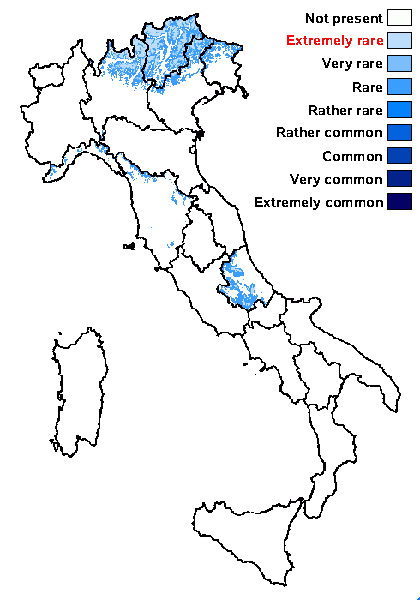
Predictive model
Herbarium samples


Felix Schumm - CC BY-SA 4.0
[VZR], Austria Styria, montes Alpium. Eisenerzer Alpen. Trofaich,
Reichenstein, secus viam inter Krumpalm et Krumphals, 1500 m,
47°29'30'' septentr., 14°56'20'' orient. Supra muscos emortuos. Leg. J.
Hafellner (41109) & I. Martinez, 29.9.1996, det. J. Hafellner. EX A.
VEZDA: LICHENES RARIORES EXSICCATI NR. 281.
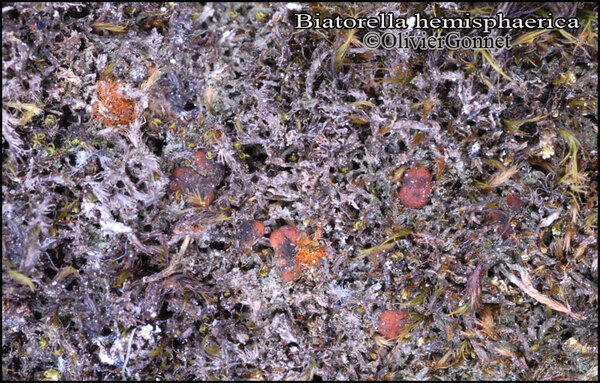
Courtesy: Olivier et Danièle Gonnet - Source: https://www.afl-lichenologie.fr/Photos_AFL/Photos_AFL_B/Textes_B2/Biatorella_hemisphaerica.htm
France, Montrond, alt. 1600 m - Mijoux - Ain
23/8/2016
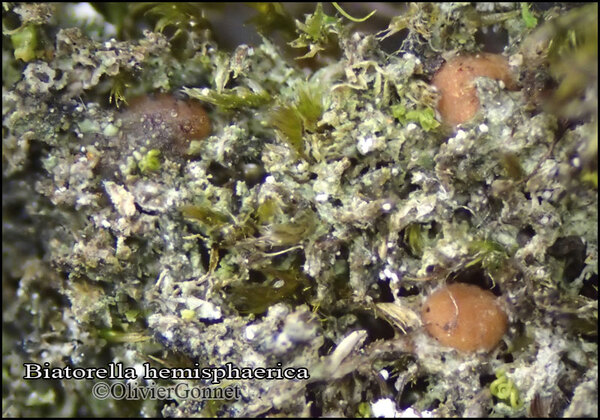
Courtesy: Olivier et Danièle Gonnet - Source: https://www.afl-lichenologie.fr/Photos_AFL/Photos_AFL_B/Textes_B2/Biatorella_hemisphaerica.htm
France, Montrond, alt. 1600 m - Mijoux - Ain
23/8/2016
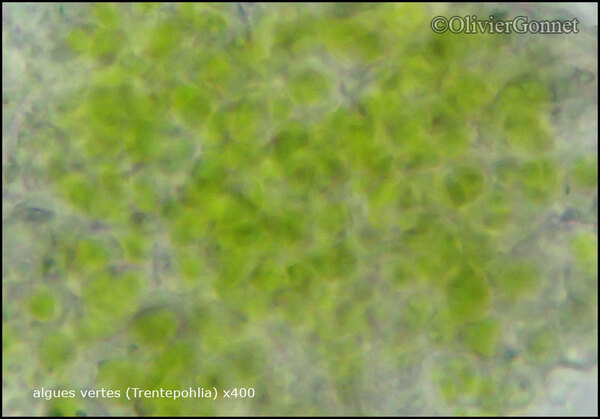
Courtesy: Olivier et Danièle Gonnet - Source: https://www.afl-lichenologie.fr/Photos_AFL/Photos_AFL_B/Textes_B2/Biatorella_hemisphaerica.htm
France, Montrond, alt. 1600 m - Mijoux - Ain
23/8/2016
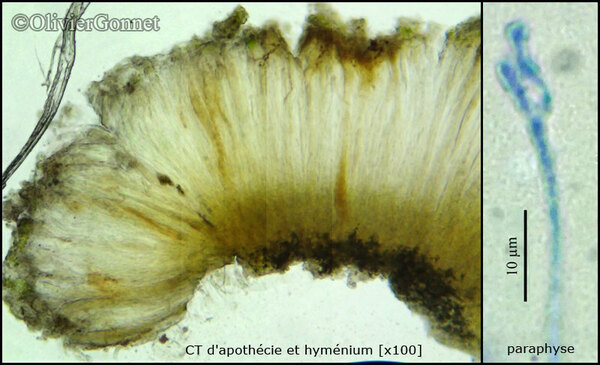
Courtesy: Olivier et Danièle Gonnet - Source: https://www.afl-lichenologie.fr/Photos_AFL/Photos_AFL_B/Textes_B2/Biatorella_hemisphaerica.htm
France, Montrond, alt. 1600 m - Mijoux - Ain
23/8/2016

Courtesy: Olivier et Danièle Gonnet - Source: https://www.afl-lichenologie.fr/Photos_AFL/Photos_AFL_B/Textes_B2/Biatorella_hemisphaerica.htm
France, Montrond, alt. 1600 m - Mijoux - Ain
23/8/2016

Courtesy: Olivier et Danièle Gonnet - Source: https://www.afl-lichenologie.fr/Photos_AFL/Photos_AFL_B/Textes_B2/Biatorella_hemisphaerica.htm
France, Montrond, alt. 1600 m - Mijoux - Ain
23/8/2016
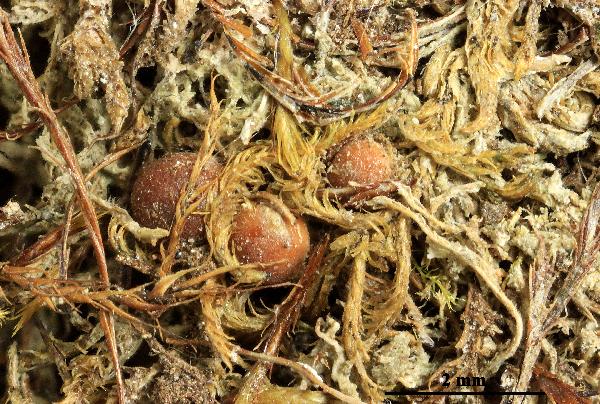

Felix Schumm - CC BY-SA 4.0
[VZR], Austria Styria, montes Alpium. Eisenerzer Alpen. Trofaich,
Reichenstein, secus viam inter Krumpalm et Krumphals, 1500 m,
47°29'30'' septentr., 14°56'20'' orient. Supra muscos emortuos. Leg. J.
Hafellner (41109) & I. Martinez, 29.9.1996, det. J. Hafellner. EX A.
VEZDA: LICHENES RARIORES EXSICCATI NR. 281.
Growth form: Crustose
Substrata: soil, terricolous mosses, and plant debris
Photobiont: green algae other than Trentepohlia
Reproductive strategy: mainly sexual
Commonnes-rarity: (info)
Alpine belt: extremely rare
Subalpine belt: very rare
Oromediterranean belt: absent
Montane belt: rare
Submediterranean belt: absent
Padanian area: absent
Humid submediterranean belt: absent
Humid mediterranean belt: absent
Dry mediterranean belt: absent

Predictive model
| Herbarium samples |


Felix Schumm - CC BY-SA 4.0
[VZR], Austria Styria, montes Alpium. Eisenerzer Alpen. Trofaich, Reichenstein, secus viam inter Krumpalm et Krumphals, 1500 m, 47°29'30'' septentr., 14°56'20'' orient. Supra muscos emortuos. Leg. J. Hafellner (41109) & I. Martinez, 29.9.1996, det. J. Hafellner. EX A. VEZDA: LICHENES RARIORES EXSICCATI NR. 281.

Courtesy: Olivier et Danièle Gonnet - Source: https://www.afl-lichenologie.fr/Photos_AFL/Photos_AFL_B/Textes_B2/Biatorella_hemisphaerica.htm
France, Montrond, alt. 1600 m - Mijoux - Ain
23/8/2016

Courtesy: Olivier et Danièle Gonnet - Source: https://www.afl-lichenologie.fr/Photos_AFL/Photos_AFL_B/Textes_B2/Biatorella_hemisphaerica.htm
France, Montrond, alt. 1600 m - Mijoux - Ain
23/8/2016

Courtesy: Olivier et Danièle Gonnet - Source: https://www.afl-lichenologie.fr/Photos_AFL/Photos_AFL_B/Textes_B2/Biatorella_hemisphaerica.htm
France, Montrond, alt. 1600 m - Mijoux - Ain
23/8/2016

Courtesy: Olivier et Danièle Gonnet - Source: https://www.afl-lichenologie.fr/Photos_AFL/Photos_AFL_B/Textes_B2/Biatorella_hemisphaerica.htm
France, Montrond, alt. 1600 m - Mijoux - Ain
23/8/2016

Courtesy: Olivier et Danièle Gonnet - Source: https://www.afl-lichenologie.fr/Photos_AFL/Photos_AFL_B/Textes_B2/Biatorella_hemisphaerica.htm
France, Montrond, alt. 1600 m - Mijoux - Ain
23/8/2016

Courtesy: Olivier et Danièle Gonnet - Source: https://www.afl-lichenologie.fr/Photos_AFL/Photos_AFL_B/Textes_B2/Biatorella_hemisphaerica.htm
France, Montrond, alt. 1600 m - Mijoux - Ain
23/8/2016


 INDEX FUNGORUM
INDEX FUNGORUM
 GBIF
GBIF
 DOLICHENS
DOLICHENS
